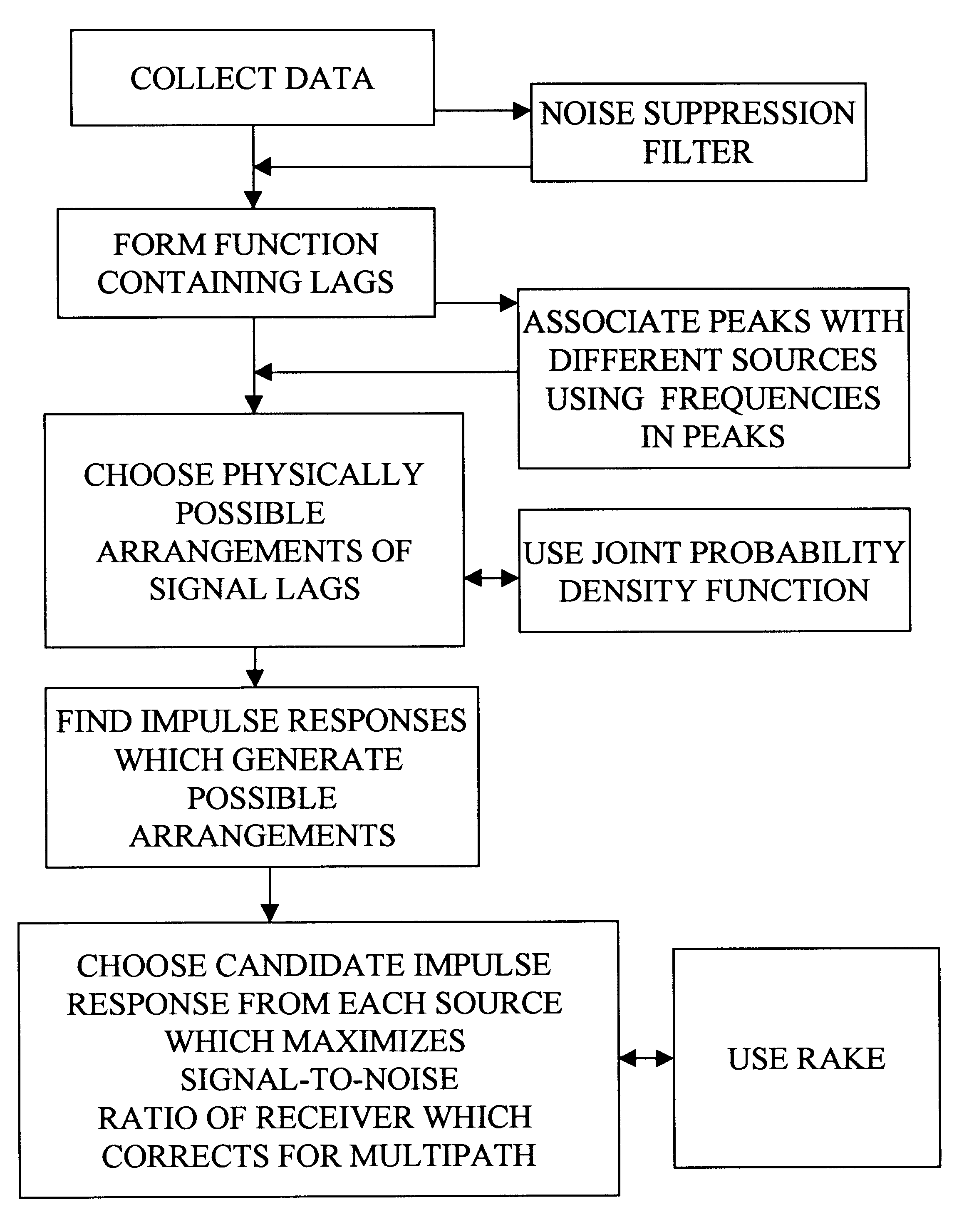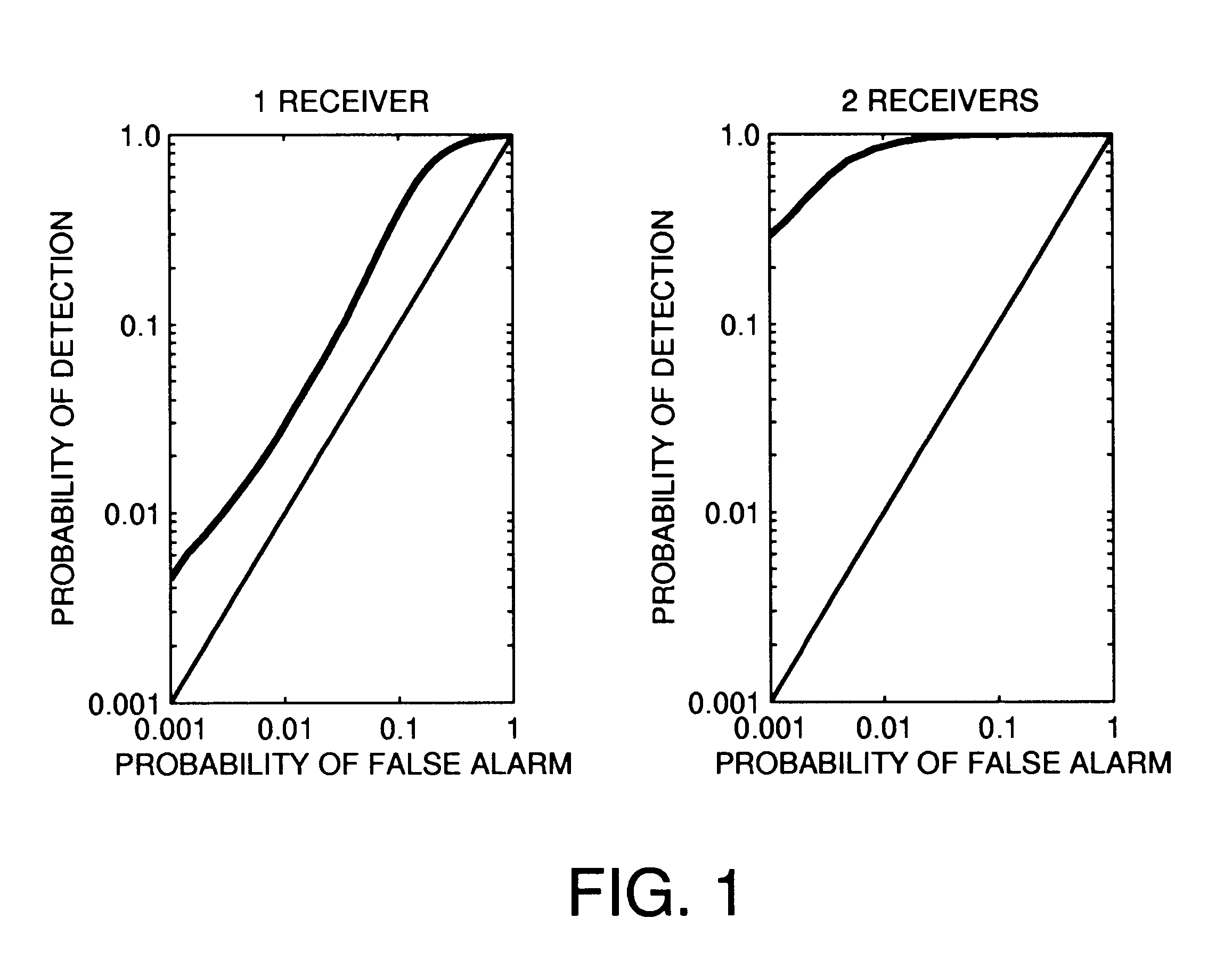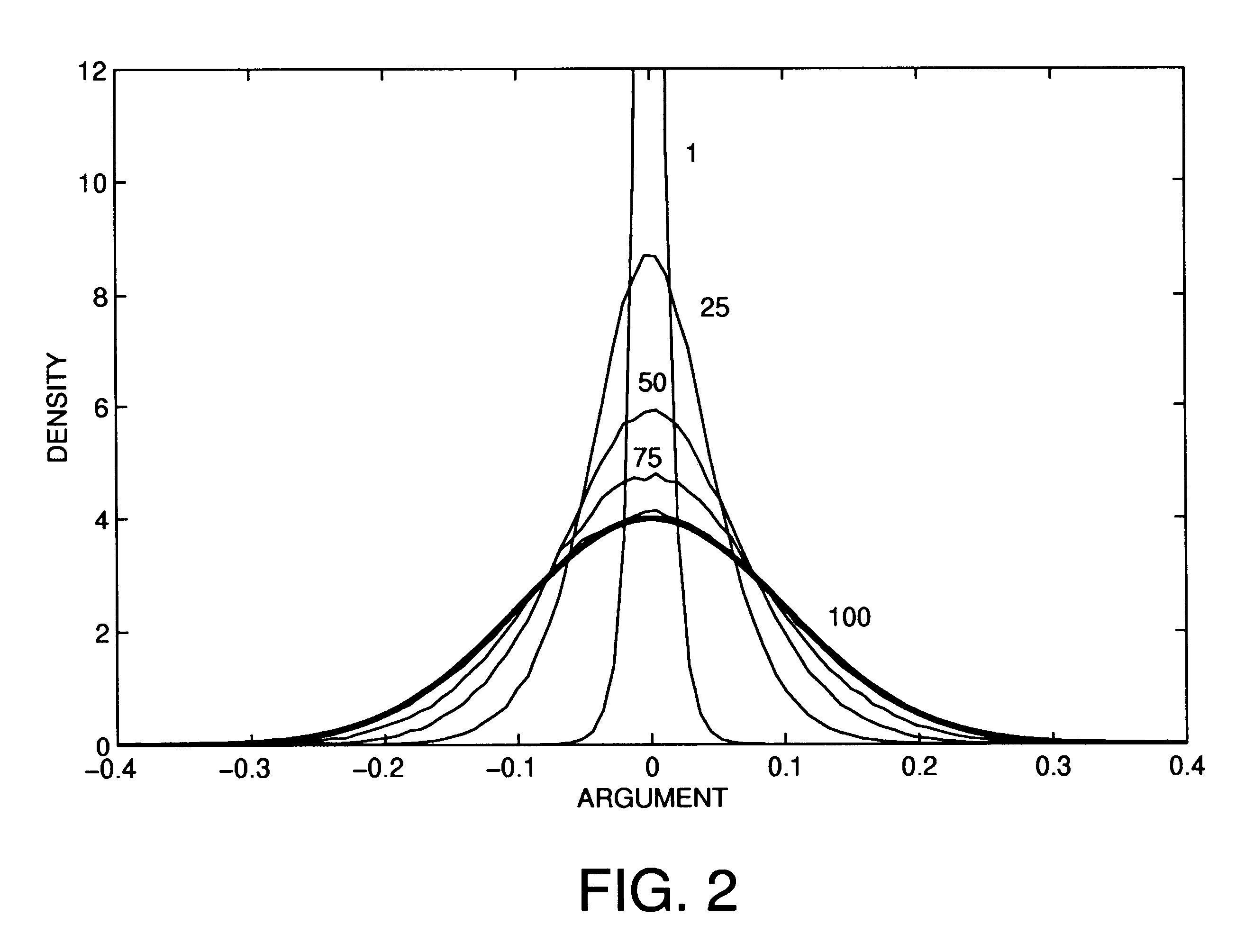Matched-lag filter for detection and communication
a technology of matched lag and detection and communication, applied in the direction of direction finders using radio waves, transmission monitoring, instruments, etc., can solve the problems of enhancing the probability of detection and the inability to detect as large as desired, and achieves enhanced detection probability, reliable modeling, and high detection probability
- Summary
- Abstract
- Description
- Claims
- Application Information
AI Technical Summary
Problems solved by technology
Method used
Image
Examples
case 1
In case 1, .tau. and N are even. There cannot be a signal at bin .tau. / 2 otherwise N would have to be odd. Work with bins .tau. / 2+1 through .tau.-1, which are referred to as the upper half. Half of the remaining N-2 remaining signals must go in the upper half with the remaining going in the lower half to maintain symmetry according to Eq. (B1). The upper half contains ##EQU69##
bins, and there are, ##EQU70##
ways of arranging the ##EQU71##
samples among them. In case 2, .tau. is even and N is odd. There must be a signal in bin .tau. / 2. The are ##EQU72##
upper half bins, ##EQU73##
through .tau.-1. They are filled with ##EQU74##
signals which can be done in, ##EQU75##
ways to make a symmetrical set. In case 3, .tau. is odd and N is even. There cannot be a signal in bin .tau. / 2. There are ##EQU76##
upper half bins, ##EQU77##
through .tau.-1. These are filled with ##EQU78##
signals which can be done in, ##EQU79##
ways to make a symmetrical set. In case 4, .tau. and N are odd. It is impossible to c...
PUM
 Login to View More
Login to View More Abstract
Description
Claims
Application Information
 Login to View More
Login to View More - R&D
- Intellectual Property
- Life Sciences
- Materials
- Tech Scout
- Unparalleled Data Quality
- Higher Quality Content
- 60% Fewer Hallucinations
Browse by: Latest US Patents, China's latest patents, Technical Efficacy Thesaurus, Application Domain, Technology Topic, Popular Technical Reports.
© 2025 PatSnap. All rights reserved.Legal|Privacy policy|Modern Slavery Act Transparency Statement|Sitemap|About US| Contact US: help@patsnap.com



